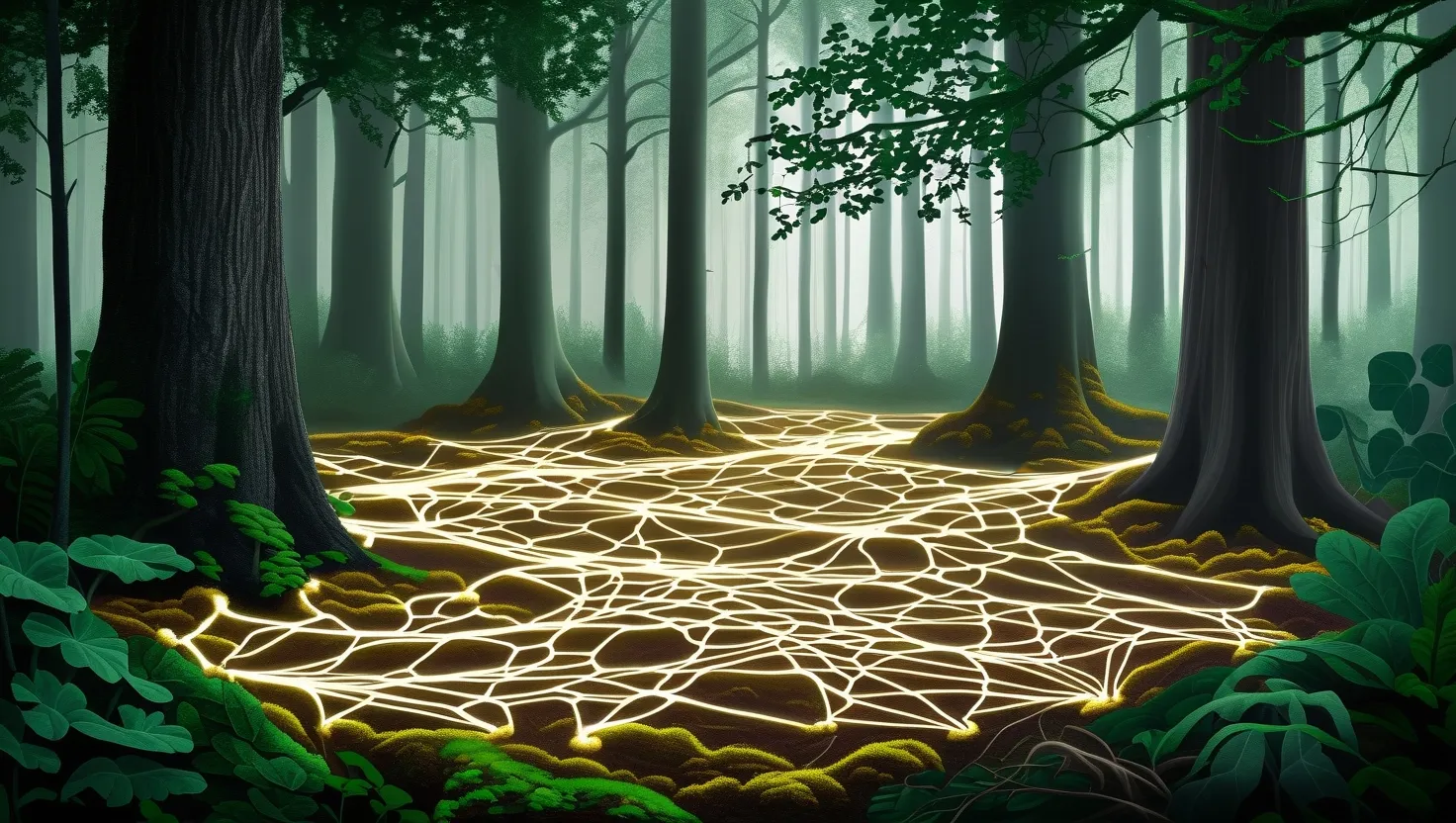As you walk through a forest, the rustling of leaves and the snapping of twigs under your feet might seem like ordinary sounds, but beneath your feet, a silent, sophisticated communication system is at work. This is the realm of mycelium, the vast underground network of fungal threads that interweave to form what some scientists are calling “nature’s hidden Internet.”
Mycelium is not just a collection of random fungal growths; it is a highly organized, intelligent network. Paul Stamets, a renowned mycologist, has long argued that mycelia are more than just passive decomposers. They are sentient, aware, and highly evolved organisms that have been shaping ecosystems for millions of years. These fungi form a vast food web that has supported life on Earth since long before humans existed. They break down rocks, release essential minerals, and convert them into nutrients that other species can use.
One of the most fascinating aspects of mycelium is its ability to communicate and share information. Fungi use a complex system of chemical signals, nutrients, and electrical impulses to coordinate their actions across the network. This communication is so sophisticated that it can be likened to a neural network, with each growing tip of the mycelium acting autonomously yet remaining accountable to the whole organism. This internal communication allows the mycelium to adapt quickly to environmental changes, such as the presence of nutrients or threats.
Recent research has taken this concept even further, suggesting that mycelium could be more than just a simple communication network; it could be a quantum information highway. Florence Quantum Labs has introduced an interdisciplinary framework that combines quantum biology, high-performance computing, and machine learning to optimize nutrient transfer in mycorrhizal fungi networks. This framework uses quantum algorithms like QAOA and VQE to simulate nutrient tunneling and protein folding, processes that are crucial for efficient nutrient exchange. By integrating these advanced technologies, scientists aim to understand and enhance the complex dynamics of nutrient transfer within fungal networks, potentially leading to more sustainable agricultural practices and improved ecosystem health.
The idea that fungi could be involved in quantum processes might sound like science fiction, but there is compelling evidence. Quantum tunneling, for instance, allows particles like protons to cross energy barriers within fungal membranes more efficiently than classical mechanics would allow. This could explain why mycorrhizal fungi maintain efficient nutrient exchange even under environmental stress. Additionally, the coherence in these systems may optimize the transfer of electrons during redox reactions, facilitating nutrient uptake.
Fungi are also capable of solving complex computational problems. Researchers have demonstrated that fungal mycelium, such as that of the pink oyster mushroom, can resolve a wide range of computational geometry problems. By changing environmental conditions, scientists can reprogram the geometry and theoretical structure of mycelium networks, using the electrical activity of the fungi to create computing circuits. This electrical activity is so complex that it rivals the communication complexity of many human languages, opening up the possibility of using fungi as efficient and practical means of information transmission and computing.
The intelligence of fungi is further highlighted by their ability to recognize shapes and make decisions based on their environment. A study published in Fungal Ecology showed that a wood-decaying mycelial network could adjust its growth patterns in response to different arrangements of wood blocks. This adaptability suggests that fungi have a form of basal cognition, allowing them to learn, remember, and make decisions without a brain.
The concept of a “wood-wide web” has gained significant attention, with mycorrhizal fungi at its center. These fungi form symbiotic relationships with trees, facilitating the exchange of nutrients and information. However, fungi are not just passive conduits; they actively perceive, interpret, and signal information to other organisms. This network is so intricate that it allows trees to share resources in a manner that resembles a communal bank, where nutrients are distributed based on need.
But what if this fungal network is more than just a local communication system? What if it is tapping into a larger, cosmic network that we cannot see? While this idea may seem speculative, it is rooted in the observation that fungi are capable of producing pharmacological compounds, including serotonin-like substances, which can interact with our own neural systems. This raises questions about the interconnectedness of life on Earth and whether there are deeper, unseen connections that influence evolution and ecosystem dynamics.
As we delve deeper into the mysteries of mycelium, we begin to realize that we are walking on a living, thinking supercomputer every time we step into the woods. This network is not just a passive backdrop for forest life; it is an active participant, shaping the environment and influencing the organisms within it. The more we learn about mycelium, the more we understand that the natural world is full of hidden connections and sophisticated systems that challenge our conventional understanding of intelligence and communication.
In the end, the study of mycelium forces us to redefine what we mean by “intelligence” and “communication.” It shows us that these concepts are not exclusive to humans or even animals but are fundamental aspects of life itself. As we continue to explore this earthy enigma, we may uncover secrets that not only change our view of nature but also inspire new technologies and approaches to sustainability and environmental stewardship. The forest floor, once seen as a simple layer of soil and decay, now reveals itself as a vibrant, interconnected world that is as fascinating as it is mysterious.






